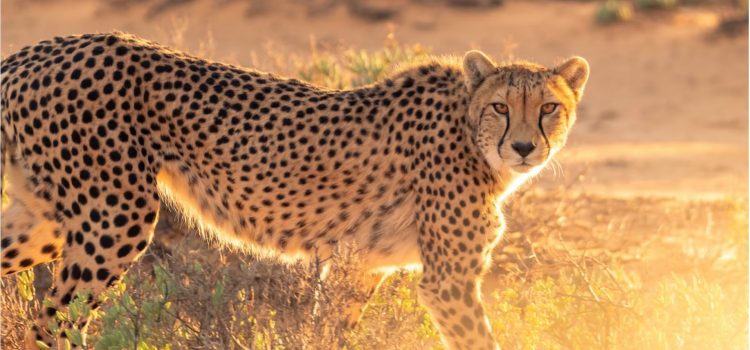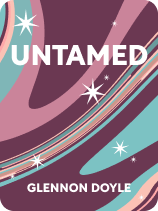

This article is an excerpt from the Shortform book guide to "Untamed" by Glennon Doyle. Shortform has the world's best summaries and analyses of books you should be reading.
Like this article? Sign up for a free trial here .
Does society suppress our primal instincts? How can we reconnect with our true selves?
Glennon Doyle’s cheetah story from her book Untamed explains to readers how society holds you captive. The cheetah in Untamed demonstrates how society has limited women’s primal instincts. According to Doyle, getting back in touch with your wild sides frees you from rigid expectations.
Read on to find out what Glennon Doyle’s cheetah story really means for women in today’s society and Doyle’s advice for breaking free.
Captivity and the Pathways to Freedom
Do you ever feel that there is a more authentic, primal self within you waiting to be free? Author, public speaker, and activist Glennon Doyle has felt the same way. According to Glennon Doyle’s cheetah story, she used to feel like a wild animal in captivity—conditioned not to feel, think, or trust herself until she learned how to break society’s rules, upend cultural expectations, and rebuild her life.
Untamed Cheetah Story: Doyle’s Inspiration
Doyle’s inspiration for her book Untamed came when she took a trip to the zoo with her family. This is where the Glennon Doyle cheetah story originated. She observed a majestic female cheetah tamed by her keepers and trained to chase a stuffed animal around her pen. Doyle identified with the cheetah because she also felt that she had been held in “captivity.” She’d learned to chase the “stuffed animals” of domesticity and conformity rather than pursue her instincts and intuition. Society had conditioned her to deny her true, undomesticated self.
As Doyle made this connection, she saw the cheetah looking out past the fences of her enclosure—remembering her wildness.
Considering the parallels between the cheetah’s experience and her own, Doyle realized that captivity is the universal experience of women. Like this female cheetah, women have been made captive—their primal instincts intentionally suppressed and devalued by society.
| Comparisons Between Glennon Doyle’s Cheetah Story and the Wild Woman Archetype Glennon Doyle’s cheetah explores how women lose connection to the primal version of themselves when they become conditioned by the expectations of their society. Doyle’s discussion of women’s inherent “wildness” and their need to return to their primal state is not necessarily new—Jungian analyst and storyteller Clarissa Pinkola Estés claims these concepts are as old as civilization. Estés explores the historical and cultural background of these ideas in The Women Who Run With Wolves. Estés analyzes myths and fairy tales to reveal common themes and characters that serve as mythological archetypes in stories throughout the human experience. In these stories, the “wild woman” is a commonly-explored figure who resists civilization and lives in touch with nature and her soul. She often lives on the fringes of society, is not bound by its rules, and speaks the truth. Estés says that reading about these figures can help women recognize these qualities in themselves and remember their primal nature. |
Pathways Out of Captivity
After her experience with the cheetah helped her reflect on her life, Doyle identified the “pathways” that had allowed her to escape captivity. According to Glennon Doyle’s cheetah story, women must rediscover the wildness within them to regain their freedom.
Glennon Doyle’s cheetah story argues that you must embrace the qualities taken away or diminished during captivity to live in your primal state. By understanding what was taken away during captivity, you can recognize and unlearn your social conditioning. Doyle introduces four pathways to help you identify and recover these lost capacities and instincts.
- Pathway #1: Embracing Your Emotion—numbing your emotions has stopped you from being able to express your feelings. This pathway encourages you to embrace and express your emotions to be fully human.
- Pathway #2: Embracing Your Intuition—the tendency to look to others for validation has diminished your ability to tap into your intuition and trust your decisions. By following this pathway, you can learn to explore your intuition through quiet reflection.
- Pathway #3: Embracing Your Imagination—the social message that you must accept—and be nothing but grateful for— your current reality has diminished your ability to imagine a new reality. Embracing your imagination will help you create a better, more vibrant life.
- Pathway #4: Embracing Deconstruction and Reconstruction—your ability to deconstruct your existing beliefs and rebuild a new life for yourself has been taken away by society’s interest in maintaining the status quo. This pathway helps you deconstruct your old ways of thinking so you can rebuild your life around emotion, inner knowledge, and imagination.

———End of Preview———
Like what you just read? Read the rest of the world's best book summary and analysis of Glennon Doyle's "Untamed" at Shortform .
Here's what you'll find in our full Untamed summary :
- Glennon Doyle's story of freeing herself from society's rules and expectations
- Why you should rebuild your life using emotion, intuition, and imagination
- A look at how young women are taught to repress their emotions and desires






